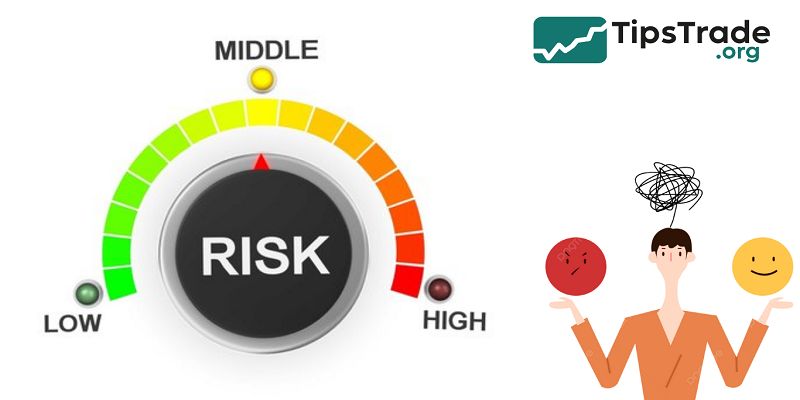How to start stock investing is a vital step for anyone who wants to build wealth and secure their financial future in today’s dynamic market environment. Understanding the basic concepts, such as how the stock market operates, different types of stocks, and risk management, is essential before making any investment decisions. Equipping yourself with this knowledge allows you to approach investing with confidence and develop a strategy tailored to your financial goals, risk tolerance, and time horizon. Visit tipstrade.org and check out the article below for further information
What Is Stock Investing?
- Stock investing means buying shares — partial ownership — in publicly traded companies.
- When you buy a stock, you become a shareholder, entitled to a portion of the company’s profits and assets.
- These profits can come through dividends or through capital gains when the stock price rises.
- For example, if you buy Apple (AAPL) stock at $150 and sell at $180, your profit is a $30 capital gain per share.
- Over decades, stock investments historically outperform most other asset classes, with the S&P 500 averaging about 10% annual returns since its inception (Source: Morningstar).
Why Invest in Stocks?
- Stocks allow your money to grow through compounding returns — profits that generate more profits over time.
- Unlike savings accounts or bonds, equities provide ownership in real businesses that innovate and expand.
Key reasons to invest include:
- Wealth accumulation: Long-term growth outpaces inflation.
- Passive income: Dividends from mature companies can generate steady cash flow.
- Accessibility: Today, investing apps let anyone start with as little as $10.
According to data from Fidelity, investors who stayed in the market for at least 15 years almost never lost money, regardless of entry timing.
How the Stock Market Works

- The stock market connects companies seeking capital with investors seeking growth.
- Companies list shares on exchanges such as the New York Stock Exchange (NYSE) or NASDAQ through initial public offerings (IPOs).
Investors then buy and sell these shares via brokers, and prices move based on supply, demand, and company performance.
- When the economy expands or a company reports strong earnings, stock prices tend to rise; during recessions or uncertainty, they may fall.
- Think of the stock market as a barometer of business confidence and investor sentiment. While short-term fluctuations are normal, the long-term trend historically favors growth.
Setting Your Financial Foundation
Define Your Financial Goals
Before buying your first stock, clarify what you’re investing for: retirement, home purchase, education, or financial independence. Setting clear goals helps determine your time horizon and risk level.
For instance:
- Short-term goals (<3 years): Focus on low-risk assets (e.g., ETFs or bonds).
- Long-term goals (5–20 years): Stocks or index funds offer higher growth potential.
A well-defined plan prevents emotional decisions when markets fluctuate.
Build an Emergency Fund Before Investing
- Experts recommend saving at least 3–6 months of living expenses before investing.
- This safety net prevents you from selling stocks prematurely during downturns.
- For example, if your monthly expenses are $1,000, keep $3,000–$6,000 in an accessible savings account.
- That way, even if markets drop 20%, you won’t need to liquidate investments at a loss.
- According to Bankrate, nearly 60% of Americans can’t cover a $1,000 emergency — a key reason many investors fail early.
Understand Your Risk Tolerance
Risk tolerance refers to how much market volatility you can handle emotionally and financially.
- Conservative investors prefer stability, often choosing blue-chip stocks or ETFs.
- Aggressive investors accept more volatility for higher potential returns.
You can assess your risk level using online tools from reputable sources such as Vanguard or Charles Schwab. Aligning risk with your goals prevents panic selling when markets dip.
How to Start Stock Investing
Choose a Reliable Brokerage Account
A brokerage account is your gateway to the stock market. Today’s brokers offer intuitive platforms, fractional shares, and low fees.
Top options for beginners include:
| Broker | Minimum Deposit | Notable Features |
| Fidelity | $0 | Strong research tools |
| Charles Schwab | $0 | Fractional shares + ETFs |
| Robinhood | $0 | Mobile-first investing |
| Interactive Brokers | $0 | Advanced analytics |
Select one based on usability, fees, and available educational resources.
Understand Fees and Commissions
Even small fees can erode long-term returns. Always compare:
- Trading commissions (many brokers now offer $0 trades)
- Expense ratios for mutual funds or ETFs
- Account maintenance fees or inactivity charges
Example: A 1% annual fee on a $10,000 portfolio could cost you over $50,000 in lost returns after 30 years (Source: FINRA).
Learn Key Investment Terminology
Understanding terms like P/E ratio, dividend yield, and market capitalization helps you evaluate stocks wisely.
Quick glossary:
- P/E Ratio: Price divided by earnings per share; indicates valuation.
- Market Cap: Total company value = share price × shares outstanding.
- Dividend Yield: Annual dividend ÷ stock price, shows income potential.
Knowledge builds confidence and minimizes guesswork.
Steps to Start Stock Investing
Research and Choose Stocks
- Start with companies you know — products or services you use daily. Study fundamentals like earnings growth, debt levels, and competitive advantage.
- Tools such as Yahoo Finance, Morningstar, or Simply Wall St provide free data and visual reports.
- Pro tip: Build a watchlist and follow price trends for a few weeks before buying.
Diversify Your Portfolio
Never put all your money in one stock. Diversification reduces risk by spreading investments across industries and asset types.
For example, a simple diversified portfolio might include:
- 40% U.S. large-cap stocks (e.g., S&P 500 ETF)
- 30% international stocks
- 20% bonds or fixed income
- 10% cash or REITs
Diversification ensures that one company’s poor performance won’t sink your portfolio.
Decide How Much to Invest
You don’t need thousands to start. Many platforms let you begin with $50 or even $10 using fractional shares.
General rule: Invest only what you can leave untouched for at least 3–5 years. Automate monthly contributions to build consistency — a method known as Dollar-Cost Averaging (DCA).
Place Your First Order (Market vs. Limit Orders)
When buying a stock, you’ll choose between:
- Market Order: Executes immediately at the current price.
- Limit Order: Executes only at your chosen price or better.
For beginners, limit orders offer more control, especially in volatile markets. Always double-check the ticker symbol and number of shares before confirming.
Monitor and Adjust
- Review your portfolio quarterly or semi-annually.
- Check whether allocations still align with your goals and rebalance if one asset grows too large.
- Avoid daily monitoring — it often leads to impulsive decisions.
- Focus on long-term trends, not short-term noise.
Popular Investment Strategies for Beginners

Long-Term Investing vs Trading
- Long-term investors buy and hold stocks for years, relying on business growth and compounding.
- Traders, however, buy and sell frequently, seeking short-term gains.
- Research from Dalbar shows that average investors underperform the market because they trade too often.
- For beginners, long-term investing usually yields better results with less stress.
Dollar-Cost Averaging (DCA)
- DCA means investing a fixed amount regularly, regardless of market price.
- This strategy reduces the risk of entering the market at the wrong time and smooths out volatility.
Example: Investing $200 monthly in an S&P 500 ETF lets you buy more shares when prices are low and fewer when prices are high — lowering your average cost.
Investing in ETFs and Index Funds
Exchange-Traded Funds (ETFs) and index funds allow you to own hundreds of stocks in one purchase. They’re perfect for beginners seeking diversification and low fees.
Popular options include:
- Vanguard Total Stock Market ETF (VTI)
- SPDR S&P 500 ETF (SPY)
- iShares Core MSCI EAFE ETF (IEFA)
According to Morningstar, index funds consistently outperform most active mutual funds over 10-year periods.
Dividend Investing
- Dividend investing focuses on companies that pay regular cash dividends.
- It’s ideal for those seeking steady income along with potential price appreciation.
- Top dividend sectors: utilities, consumer staples, and healthcare.
- Reinvesting dividends can significantly accelerate long-term returns — known as DRIP (Dividend Reinvestment Plan).
Managing Risks and Emotions

Avoid Common Mistakes
Common beginner errors include:
- Chasing hot stocks or trends (FOMO).
- Selling during short-term dips.
- Ignoring fees and taxes.
- Over-trading without a plan.
Discipline and education are the best defenses. Remember: time in the market beats timing the market.
Keep a Long-Term Perspective
- Markets move in cycles — bull runs and corrections are normal. Over 100 years of U.S. data show that the market rises in about 70% of years (Source: J.P. Morgan Asset Management).
- Long-term investors who stay invested during downturns often recover faster and earn more. Patience and consistency are your greatest assets.
Rebalance Your Portfolio Regularly
As your investments grow, some assets may outperform others, altering your target allocation. Rebalancing — typically once a year — restores your desired mix.
Example: If stocks grow from 60% to 75% of your portfolio, sell some stocks or add bonds to reset the balance. This maintains your chosen risk level and ensures disciplined investing.
Tools and Resources for New Investors

Best Free Stock Simulators and Apps
Before investing real money, practice using simulators:
- Investopedia Simulator – learn trading risk-free.
- TradingView Paper Trading – test strategies.
- MarketWatch Virtual Stock Exchange – compete with others.
Mobile apps like Fidelity, Schwab, or Robinhood also provide real-time data and educational materials.
Books, Courses, and YouTube Channels to Learn
Learning never stops. Trusted sources include:
- “The Little Book of Common Sense Investing” – John C. Bogle
- “A Random Walk Down Wall Street” – Burton Malkiel
- Graham Stephan and Andrei Jikh on YouTube
- Free courses from Coursera and Khan Academy
These resources build both confidence and competence.
Conclusion
How to start stock investing requires careful research, patience, and discipline, especially for beginners who might feel overwhelmed by market fluctuations. Successful investing is not about quick gains but about consistent, long-term growth through informed decisions and regular review of your portfolio. By staying committed to your plan and continuously learning about market trends, you can use stock investing as a powerful tool to grow your assets steadily and achieve financial independence over time.

